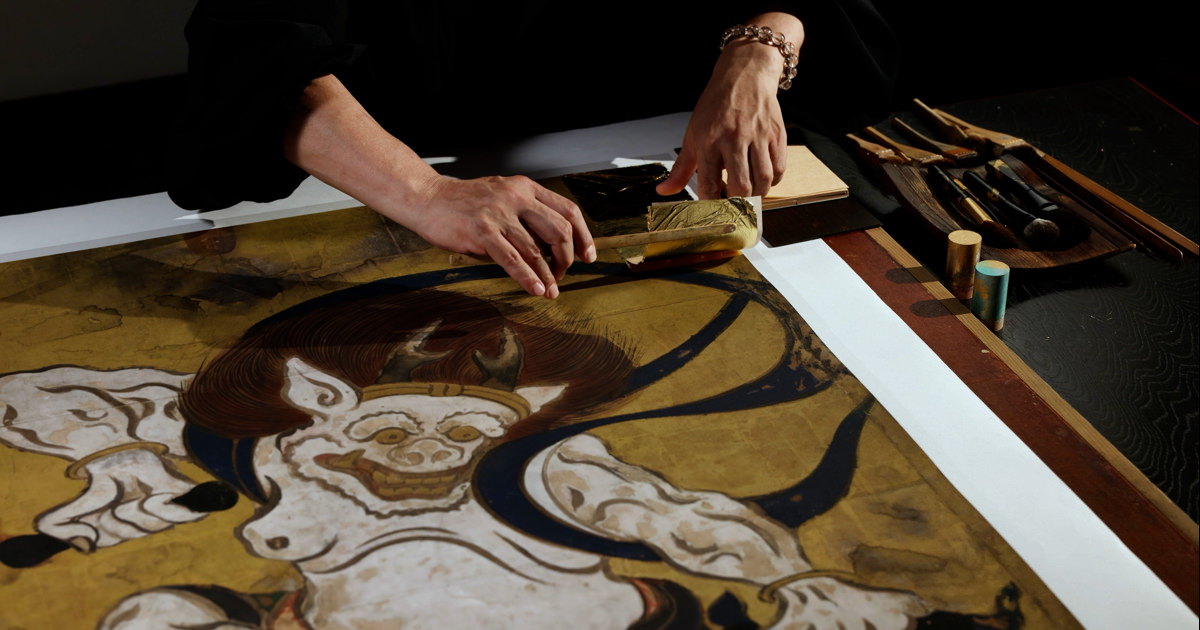All photographs ©2024 Museum of Fine Arts, Boston. Reproduced with permission
These images are based on the high resolution facsimile produced by the Tsuzuri Project. Unauthorized copying, duplication, or transfer of these images is strictly prohibited.
Waves at Matsushima
High-resolution facsimiles
- Material
- printed, gold on washi paper
- Period of creation
- Tsuzuri Project Stage 15 2022–2023
- Recipient
- Kyoto City University of Arts
Original
- Artist
- Ogata Korin
- Historical era
- Edo (18th century)
- Material
- Ink, color, and gold on washi paper
- Medium
- six-fold screen
- Size
- H155.0 × W367.4 cm
- Collection
- Museum of Fine Arts, Boston
Description
The school of painters presently known as the Rinpa School has been tied together not through direct teacher-student relationships, but through relationships of admiration which transcend era. This succession began when Ogata Kōrin discovered Tawaraya Sōtatsu, who had lived 100 years prior. Kōrin was deeply taken with the works of Sōtatsu, and incorporated Sōtatsu's techniques and aesthetic sense in pursuing his own art.
This is not only a representative work of Kōrin's, but also a piece that clearly expresses a relationship between these two which goes beyond space and time. The theme is taken from “Waves at Matsushima” (collection of the Smithsonian Institution National Museum of Asian Art in the United States), a masterpiece by Sōtatsu also produced as the third stage in the Tsuzuri Project. This work is not limited to being a mere reproduction; Kōrin has also added his own original interpretations. One can see even more dynamic expression in, for instance, the movement of the waves. It is said that this work was originally owned by a daimyo family, but it was purchased in 1880 in Kyoto by Ernest Fenollosa, who had come to Japan as a foreign advisor hired by the Japanese government, and later entered the collection of the Museum of Fine Arts Boston.



